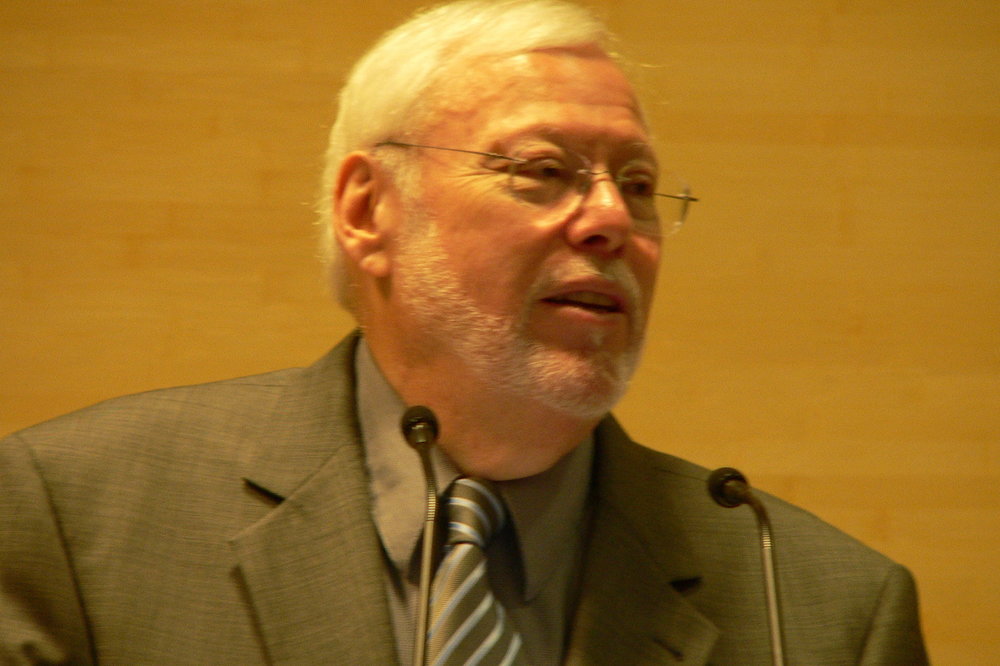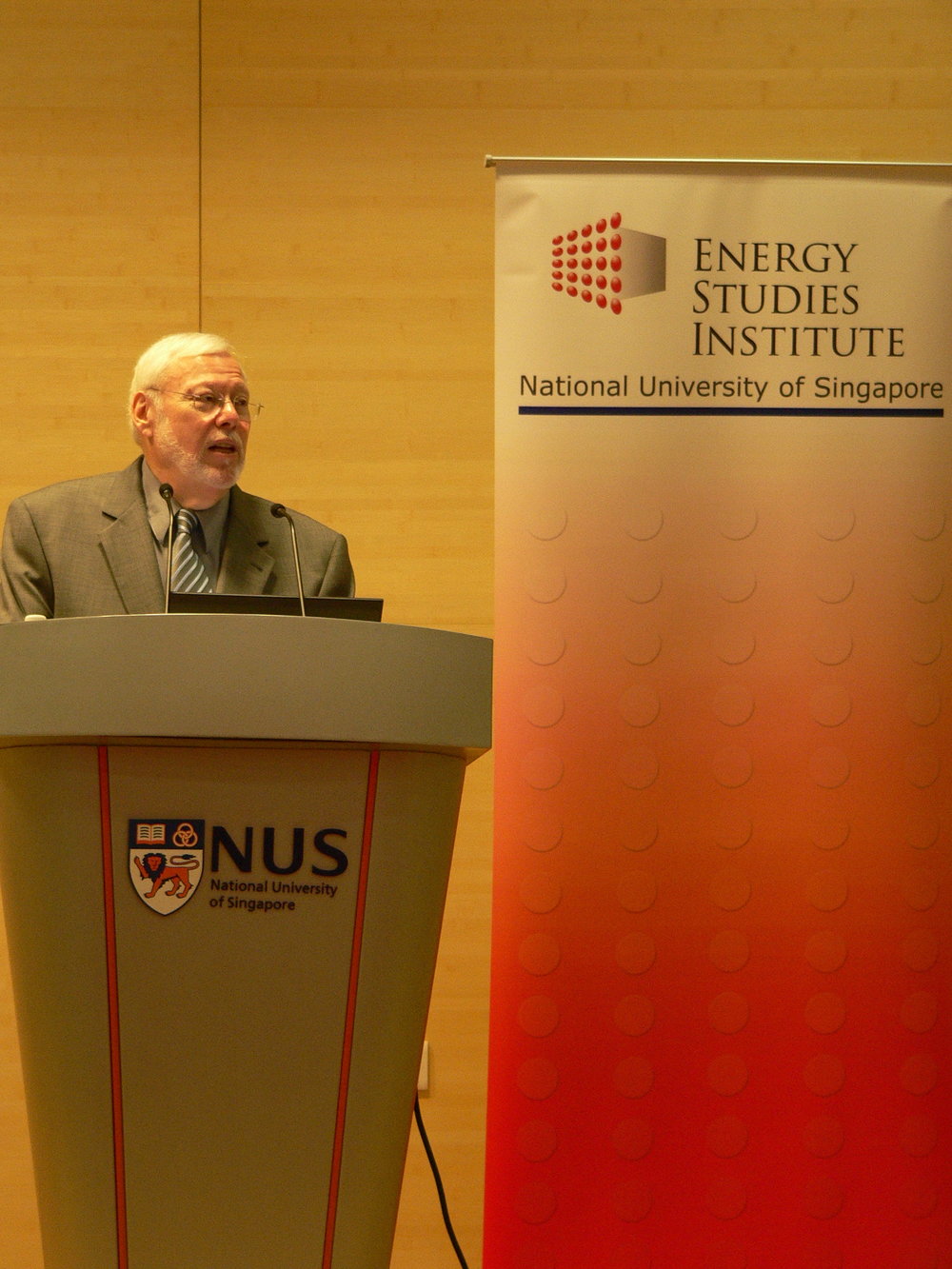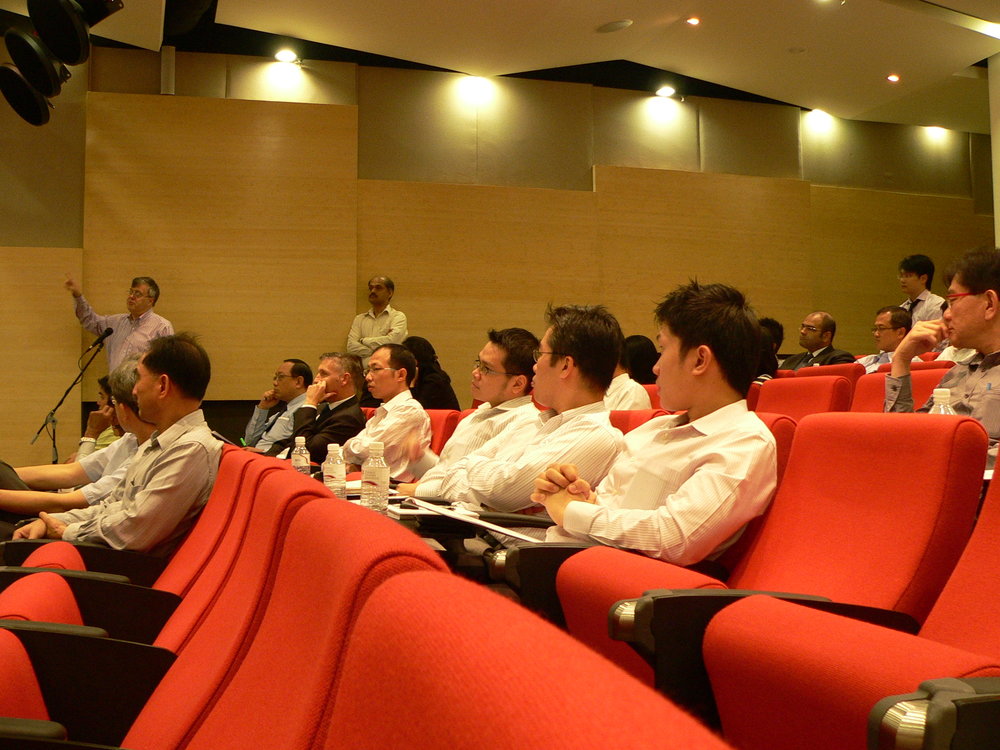by Mallika Naguran
20 April 2009, Singapore. “You might have noticed that we have a new President,” said Mark Ginsberg as he flashed a slide of Mr Barack Obama on the screen. Laughter from the audience greeted the Board of Director with the Office of Energy Efficiency and Renewable Energy (EERE), Department of Energy, USA.

"Leapfrog into new generation technologies" - Mark Ginsberg
Mark was addressing a rapt audience in Singapore at the invitation of the Energy Studies Institute of the National University of Singapore on 16 April 2009. His mission was not just to introduce the new President’s environmental measures, but also to put forth an argument that economic prosperity can be had from the development and proliferation of clean energy technologies.
The connection between economics and energy is clear and present, and a big deal. “I’ve joked about energy efficiency being inevitable for the last 30 years. And now it finally is. Now the world leaders are talking about it in the way I could never have imagined years ago,” shared Mark. Having served in previous US Administrations, Mark described Obama’s inaugural address as “music to my ears”, in particular when the new President spoke about connecting energy to economic solutions.
The President is bent on cracking America’s oil addiction. He has announced a US$150 billion investment in energy technologies over the next 10 years that will restore the economy in the short term, and the creation of five million new jobs. In the long term, the country will see a more efficient, effective and productive economy. This sum is part of the newly announced American US$700 billion recovery and reinvestment budget.
“We got to be lean and clean in order to make it more successful in the future,” said Mark, explaining that strategies are in place to “reduce oil imports, put one million plug-in hybrids on the road that go up to 150 miles per gallon, and to ensure than 10% of our energy come from renewables by 2012, and 25% by 2025.”
Drilling down to details, the US is embarking on a slew of initiatives: double the alternative energy over the next three years, modernise 75% of federal buildings (currently there are around 500,000), and improve the energy efficiency of two million homes - particularly eligible are low-income families. “We will build solar panels, wind turbines, construct fuel efficient cars and buildings, develop clean technologies that will lead to more jobs, more savings and cleaner safer planet for us all,” said Mark.
Mark spoke more importantly of the development of new generation of technologies. “The concept of science and discovery is to invest in science to achieve transformation technologies (not just incremental) to leapfrog into the next generation,” he said. Transformational technologies will change the landscape of energy supply and demand, boost economic prosperity, create millions of green jobs and increase competitiveness. “Not only the US, but if the whole world is not competitive, it will be business as usual,” said Mark.
As part of his commitment in ramping up a new generation of technologies, President Obama had appointed Nobel Peace Prize Winner and Head of National Laboratory Dr Steven Chu, the new Secretary of Energy, who has since restated the Obama Administration’s energy priorities. Dr Chu, described Mark, spoke about the need to pursue material and cost effective measures with a sense of urgency.
“He said that we can’t wait any longer,” said Mark. So some major priorities and goals have been set such as achieving sustainable cities through zero energy buildings and communities.
Sustainable Cities
Currently half of the electricity supplies of the US come from coal, 20% from nuclear, and only a few percent from renewable sources. With coal as a cheap source, the switch to alternative energy supplies is going to be slow but sure.

Waste is an enemy.
Strategies to achieve sustainable cities thus include increasing supplies of alternative energy sources and advancing technologies that lead to zero energy communities. “I am optimistic about solar energy,” said Mark. “Solar water heating is cost effective; concentrating solar has great applications and photovoltaic solar can be attached to buildings in a way that can make buildings power plants.”
Mark described how the head of MIT had told President Obama when he was visiting the institution about its research projects: microdots on windows to harness solar power (a nano capability), advanced battery and storage and non-food biofuel generation. Wind turbines, said Mark, are improving with lightweight materials harnessing greater wind from lower speeds, and he is hopeful: 20% of energy sources would come from wind, he opined, up from few percentages now.
Other promising technologies that will change the shape of things are geothermals and nanotechnology. “There are over a million geothermal heat pumps in the US. My interest is ground source heat pumps for buildings. They are cost effective and environmentally sound,” said Mark.
As for biofuels, Mark stressed that the US government is committed to next generation non-food biofuels. “We do not want to compete with food,” he said, adding that there are existing farmlands in the US and Europe that can be used for energy crops.
In the US, corn is a major part of its ethanol product. In terms of phasing out corn-based ethanol, it will take a while. “Historically, mid-western farmers produced ethanol for their trucks on their farm and they produced a little more and sold it,” explained Mark. Even with the progress with alternative energy sources, Mark suspects that in the future, there will still be some corn-based ethanol in the US “as it’s one of the feedstock”. He added, “I don’t know if they’ll be able to make that conversion to the stalk and not the corn, as energy content (of the stalk) is less, so the economics will begin to make the change.”
Economics will change with technological breakthroughs. “We’re working like crazy to invest in nonfood second generation cellulosic fuels. Our idea is to take a variety of feedstock from different plants, find the best energy sources from those plants, explore conversion processes (chemical or thermal) that can be the most effective ways of utilizing the energy in each of the different plants.”
Human genome technology is also being employed in research, revealed Mark, so that plants can produce energy. Mark then shared what the US Administration has in mind to reduce demands. For one, there is the Save Energy Now programme for industrial assessments and tools to save energy resource at the workplace. In the US, buildings guzzle 40% of energy consumption. This figure is set to grow if nothing is being done.
Mark, however, spoke about arresting this by optimizing system components and work toward zero energy building and communities. Firstly, there are down-to-earth tools in place to help buildings operate more efficiently such as energy labeling schemes like Energy Plus, Consumer Star, and standards set by the US Green Building Council.
Then, of course, there’s science fiction. “We are working towards buildings becoming power plants,” said Mark. He spoke about new generation of sophisticated controls as the key part of moving towards smart grid, beyond smart buildings. “From power plants to refrigerator that have controls that can send electrons to the right place at the right time at the right price; and that can optimize the performance of the electric grid – this is big part of President’s investment strategy,” said Mark.
“We are moving towards zero energy buildings; buildings that are so energy efficient that produce their own power through photovoltaic cells or heat pumps that over the course of the year, they produce as much energy as they require,” he said. Mark shared how he faced laughter and derision 15 years ago when he talked about zero energy buildings; now he sees this being developed as a study by the International Energy Agency, and a special project by the Asian Energy Partnership. Mark served as Director of the Arizona Energy Office before joining the Department of Energy in 1991.
“The research goal at US EERE is that (we are confident) with the advancements in energy efficiency technology of renewable technologies, we can achieve cost effectiveness in a building; so that a typical building in 2025 will cost the same as a zero energy building. With the new investment that the President is making, we think we can move that date up substantially.”
In Zero Energy Communities, everything is a resource and nothing is waste. For example, buildings that serve as power plants, and municipal waste that goes into local bio-refinery for transportation fuel instead of landfills.

Ideas, not oil addicts at the Energy Studies Institute.
“Waste is our enemy and we need to overcome some of that,” said Mark.
Mark is optimistic about the future because of new emerging technologies. These, he said, can break through the problems of the past, and genuinely apply for current solutions.
Photos by Mallika Naguran.
Useful Sites:
Energy Studies Institute www.esi.nus.edu.sg
Office of Energy Efficiency and Renewable Energy www.eere.energy.gov
Alliance to Save Energy www.ase.org
Building technologies programme www.highperformancebuildings.gov
US Green Building Council www.usgbc.org
Promoting an Energy Efficent Public Sector www.pepsonline.org